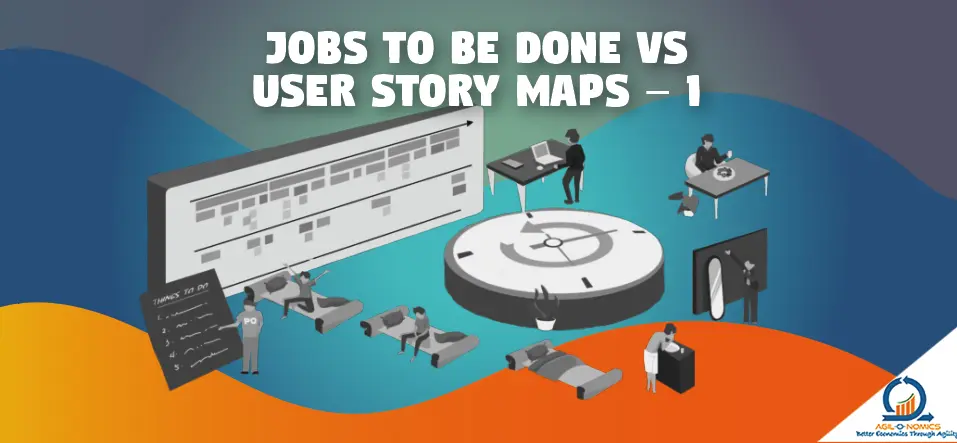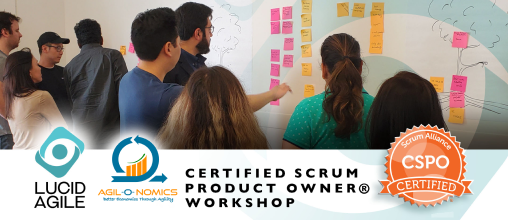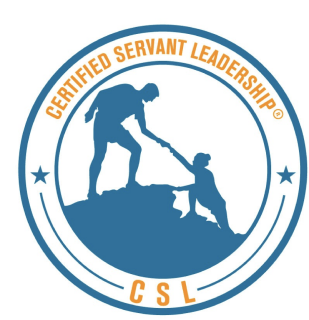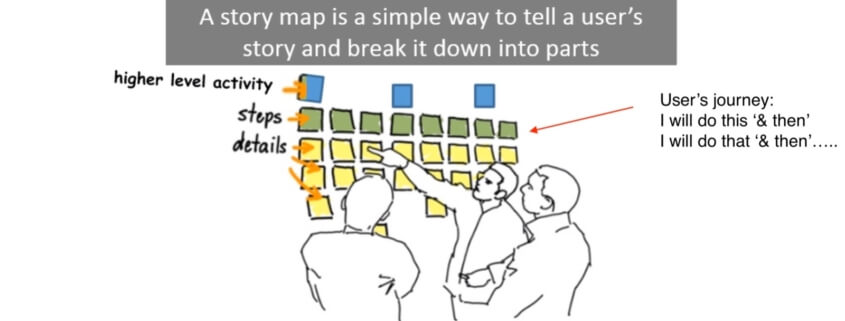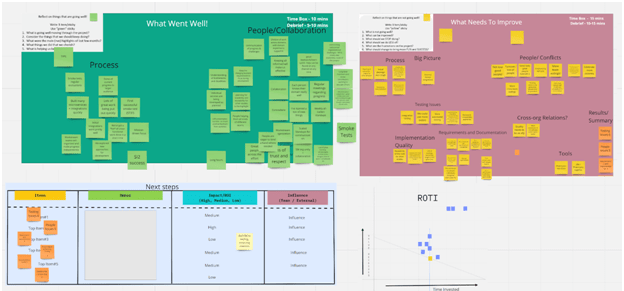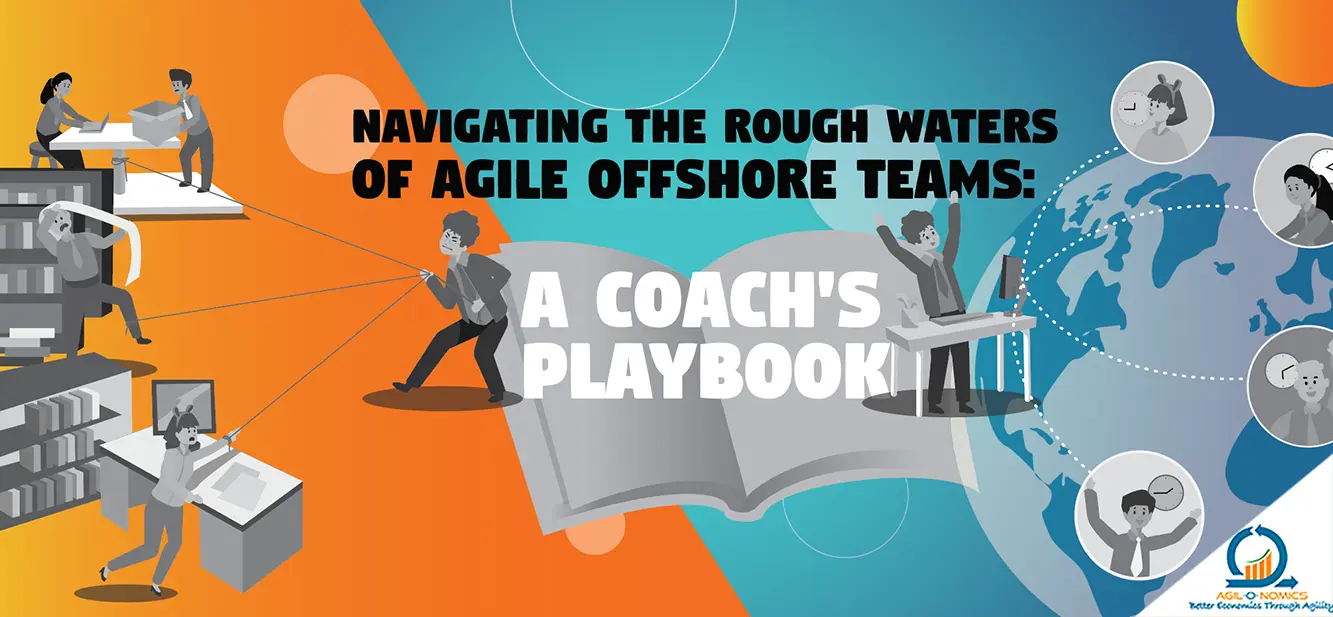
Navigating the Rough Waters of Agile Offshore Teams: A Coach’s Playbook
Intro: The Uncharted Waters of Agile Transformation Agile is no longer the new kid on the block. Over the past two decades, it’s been around the block, through the maze, and even found its way into traditional, non-tech sectors. But despite its widespread application, one thing that’s rarely talked about is how Agile fits with offshore remote teams. Businesses are heading toward this model in droves, and yet we’re still stuck on Agile playbooks that advocate for co-location. So, let’s cut to the chase: How do we make Agile work in this complex offshore maze? A Story Worth Telling: The Offshore Abyss Let’s walk through a common war story. You’re working with a client in the Midwest, running a Scrum team that’s a cocktail of cultures and time zones. You have folks in India, Argentina, and Romania. Right off the bat, your Scrum Master is struggling. The offshore team members are shying away from the camera, creating a virtual barrier that’s hard to break down. These ‘invisible’ members find themselves swimming in their private ponds, disconnected from the team’s collective objectives. The Scrum Master looks like a helpless spectator, attempting to conduct Scrum events but never really achieving the cohesion Agile demands. The Elephant in the Room: When Time Zones Attack But what about another beast? The time zones. Forget the cultural barriers and organizational eccentricities for a second. The sheer lack of overlapping working hours between Romania and Argentina, and India and US for example, is a challenge of herculean proportions. Your daily standups turn into an uncomfortable juggle between the early mornings and late nights, and you struggle for more team time but know it can’t come without making someone less happy. More Than Just Cultural Gaps: The Silent Struggles And, then there are cultural nuances. Imagine having a Product Owner who’s a Westerner—outspoken, assertive, and always open for dialogue. Now pair this person with team members from India or Romania, where the culture might promote more subdued, less confrontational communication styles. You have a fertile ground for misunderstanding and missed opportunities. The Devil’s in the Details: Misaligned Metrics And let’s not forget, your offshore team members aren’t just juggling multiple tasks, they’re juggling multiple performance metrics. They have their managers and KPIs to answer to, which often don’t align with Agile methodologies. It’s not their fault, but it’s a hurdle, nonetheless. The Way Out: Strategies that Actually Work So, how did we overcome these challenges in our war story? First, I pulled everyone back to the basics—to the ‘Why’ of Agile. With regular training sessions, we rehashed the essence and importance of every Agile ceremony. When team members understand why they are doing what they’re doing, the ‘how’ becomes easier. It adds a layer of respect and purpose to daily stand-ups and retrospectives. For the Scrum Masters in the room, it’s time to embrace the essence of Servant Leadership fully. No longer can they afford to be mere facilitators; they must be leaders who command respect and are capable of guiding their troops through the Agile labyrinth. This starts with equipping them to have tough conversations, even with the vendor managers of their offshore team members. The key is intimacy. I advised Scrum Masters to conduct more targeted one-on-ones with their team members. If you want to break down barriers, start by building bridges. Forging individual relationships can provide team members the safety to voice out their challenges and concerns, be it time zones or vendor metrics. Avoiding the Pitfalls: Lessons from the Trenches If you’re a leader navigating these waters, remember that Agile doesn’t just ask for co-located teams; it demands small and stable teams. Offshore or not, team members are humans, not resources. Moving them around like chess pieces can severely destabilize your Agile practices. Another pitfall is stretching your Scrum Master too thin. Serving two teams filled with offshore members from multiple time zones is a recipe for burnout and inefficiency. Take this off their plate. Make it an organizational concern. Conclusion: Doing Agile Right—Anywhere, Everywhere To be clear, there’s nothing inherently wrong with having offshore team members in Agile teams. It’s the lack of aligned practices and the underestimation of the complexities involved that trip us up. We’re writing the rulebook as we go along, but one thing is crystal clear: Agile can be successfully implemented in remote, offshore settings. It takes a village of committed leaders, empowered Scrum Masters, and engaged team members. Guidelines and working agreements must be in place with clear expectations that all parties agree and adhere to. Otherwise, the complexity of it all will weigh too heavy for Agile to start rolling smoothly

